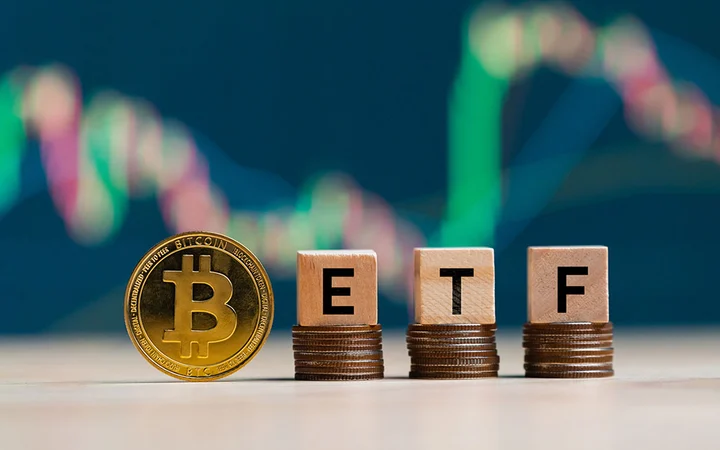After the FTX shock, where is the core force of Solana’s post-disaster reconstruction?
Where is the Central Focus of Solana's Post-FTX Shock Reconstruction Efforts?In the past two months, the Solana Gas token SOL has doubled in price, rising from a low point of $17.74 in mid-September to around $63 in early November, defying the expectations of many industry analysts.
Following the FTX collapse event in November last year, Solana, which is closely tied to this centralized cryptocurrency exchange and has received significant support from it, became one of the victims. Not only were its assets locked, but it also faced the defection of many application developers.
The main factor behind this Solana recovery is the external environment.
The FTX restructuring team recently pledged a large amount of SOL, alleviating the market’s selling sentiment. In addition, with the increasing possibility of approval for a Bitcoin spot ETF, the overall cryptocurrency market led by BTC is rising, and some funds are reallocating to SOL and its related investment funds.
- Hollywood Actors’ Union Ends Strike, AI Guidelines Included
- The SEC and Ripple: A Battle of Regulatory Titans
- The appeal war is about to ignite SBF’s parents stand up to the legal storm
After the improvement of SOL’s economic environment, there have also been internal actions within its ecosystem. At the Solana Annual Conference held in Amsterdam, some news related to technology and ecosystem development is expected to reinvigorate developer power.
As of the time of writing, SOL’s price has fallen to around $58. After a short-term increase, Solana needs more ecosystem development to support its market value in order to truly achieve post-disaster reconstruction. However, the current public chain environment is not as advantageous as the previous bear market, and the market focus has begun to shift towards Ethereum Layer 2.
FTX Shadow Casts over Solana Again
In two months, the price of SOL has tripled. During the same period, this increase is even much higher than the overall growth of the cryptocurrency market (30%), describing it as a “rebound from the bottom” is not an exaggeration.
During this period, the trial of the FTX incident in the United States was also underway, causing concerns among SOL holders.
On November 2, after about four and a half hours of trial, a jury in the Manhattan Federal Court ruled that Sam Bankman-Fried (SBF), the founder of the once prosperous cryptocurrency exchange FTX, was guilty of seven counts of fraud and conspiracy. According to the prosecutor, FTX’s hedge fund Alameda Research and SBF himself illegally misappropriated funds from FTX customers.
FTX’s collapse occurred in early November last year. At that time, its liquidity crisis was exposed in a report by the media outlet CoinDesk. It was estimated that there was an $8 billion funding gap in FTX accounts, which eventually led to the company filing for bankruptcy. Prior to the collapse, FTX was the world’s third-largest cryptocurrency exchange in terms of trading volume, with over one million users.
After the collapse, the public blockchain network Solana also became one of the victims.
Due to SBF’s personal influence, FTX has always favored Solana and made significant investments. The exchange holds approximately 65 million SOL, an asset that was once worth around $2 billion in 2021. By the end of last year after the FTX collapse, SOL plummeted to $9.96, and the value of FTX’s SOL was reduced to $650 million.
And the core team responsible for Solana’s development, the Solana Foundation, has deep connections with FTX.
In a report in November 2022, the foundation stated that it had invested in multiple FTX-related cryptocurrencies, which were trapped in the exchange after the FTX incident. These assets include approximately 3.24 million ordinary shares of FTX Trading LTD, approximately 3.43 million FTX platform tokens FTT, approximately 134.5 million Serum tokens SRM, and approximately $1 million in cash or cash equivalents.
In addition to the capital allocation between the two parties, FTX and its sister company Alameda Research have also invested in several prominent projects within the Solana ecosystem, most notably the decentralized exchange Serum.
Until FTX collapsed, Serum had been the heart of the Solana DeFi ecosystem. FTX, along with Alameda Research, not only contributed to the development of Serum but also provided liquidity for the protocol.
FTX’s collapse resulted in the inability of this heart, Serum, to beat smoothly on the Solana chain. Solana’s top NFT projects, DeGods and Y00ts, have both chosen to move away from Solana and transition to Ethereum and Polygon, respectively. Tether, a stablecoin issuer, also moved $1 billion worth of USDT from Solana to Ethereum.
Previously, Solana was considered the “Ethereum killer” because of its high performance and scalability. It processed 4,000 transactions per second and theoretically had the ability to reach 50,000 transactions per second, making it a preferred choice for many blockchain applications.
As a result of its association with FTX, Solana’s reputation has been damaged, and applications and users have fled, plunging it into an unprecedented crisis. Currently, Solana has a market capitalization of $16 billion, while Ethereum has a market capitalization of $220 billion.
One Year of Collapse, Rise of New Competitors
FTX’s collapse presented significant challenges for the recovery of the Solana ecosystem, but recently, the rebound in SOL prices is redirecting market attention back to the Solana chain, where both internal and external environments seem to be undergoing changes.
Earlier this year, bad news arrived. FTX received approval from a bankruptcy court to sell over $1.1 billion worth of SOL. This raised concerns in the market about potential price volatility due to short-term selling. However, a month later, the FTX reorganization team staked over 5.5 million SOL, worth $122 million, through Figment, alleviating some of the selling concerns.
In addition, the recent Breakpoint annual conference held in Amsterdam has also fueled developer enthusiasm for Solana.
During the conference, Solana announced the first test of Firedancer, which is Solana’s second validator node network designed to enhance the speed of existing hardware and increase network resilience. Furthermore, the collaboration with Google Cloud Big Query data warehouse assists programmers in quickly finding blockchain information.
Additionally, the conference announced that Amazon Web Services is now configuring Solana nodes, meaning validators can receive more support from Amazon.

Solana Annual Conference attracting developers
Another driving factor could be Solana’s recent improvement in its network operations. Compared to last year’s 14 days, this year’s downtime has been significantly reduced to just 1 day.
With the market’s increasing expectations for the US Securities and Exchange Commission (SEC) to approve the first Bitcoin spot ETF, investment assets related to Solana have also performed well in this positive market atmosphere.
Data provided by digital asset management company CoinShares shows that cryptocurrency investment funds attracted $326 million in new investments in the week following October 23, the highest inflow since July 2022. Among them, Solana (SOL) saw a capital inflow of $24 million, making it the highest inflow in terms of Ethereum competitor chain assets.
However, despite these reasons, some analysts have questioned them in recent days, believing that while these reasons may stimulate the market in the short term, they cannot support SOL’s long-term growth.
The competition is becoming more intense.
In the days following Solana’s association with FTX, Ethereum Layer 2 solutions led by Optimism have achieved significant growth. These infrastructures not only provide faster and lower-cost transaction efficiency but also enjoy the security advantages of Ethereum through “rollup” technology.
New stars have also emerged in the Layer 1 new blockchain market, such as Aptos and Sui, which are just as fast as Solana. Both of them adopt Move as the smart contract language, which is regarded by many as the first powerful alternative to the Ethereum Virtual Machine (EVM).
Under the competition, what Solana needs to do most is to find a way to retain ecosystem builders. Currently, it seems to be ineffective and even some applications have decided to leave. On October 17, decentralized liquidity staking protocol Lido Finance announced that it would cease operations on Solana, citing financial sustainability and low fees as the reasons.
Amidst the competition and the constant changes in the market, the future of Solana remains uncertain.
We will continue to update Blocking; if you have any questions or suggestions, please contact us!
Was this article helpful?
93 out of 132 found this helpful
Related articles
- Research on Layer 2 and Optimistic Track
- Did Layer 2 really scale Ethereum?
- Bankless Joint Creation What I learned about Solana on Solana BreakPoint
- Chainalysis India ranks first in grassroots cryptocurrency adoption.
- Conference Guide Devconnect Istanbul 2023 Schedule and Surrounding Activities (Continuously Updated)
- LianGuai Morning News | Indian grassroots cryptocurrency ranks first in Layer 2 with a total lock-up amount of 13.53 billion US dollars.
- From Suspected Crypto Fraudster to Unexpected Guest The Intriguing Tale of Their Presence in South Korean President’s State Visit to Saudi Arabia



